Is there anything you don’t know about Indonesia? Take it easy, we will discuss all the basic and important things you need to know about Indonesia. A country that has this cultural diversity, it will never run out to learn. Let’s learn together.
Indonesia is also known as Republic of Indonesia today referred to as the Unitary State of the Republic of Indonesia or NKRI.
Indonesia becomes a country that is actively visited by visitors from abroad because it has uniqueness and enchanting natural beauty. This causes tourism to become one of the strong pillars of Indonesia’s economic existence.

As Indonesian citizens, we should be grateful to be given the opportunity to live in this beautiful country. It has beautiful landscapes, a complete climate, and of course a magnificent cultural diversity. It is important for us to realize this to foster love for the Unitary State of the Republic of Indonesia.
There are several things that we need to discuss about the country of Indonesia that are important to know, as follows:
History of the Establishment of the Unitary State of the Republic of Indonesia
The existence of the Indonesian state certainly cannot be separated from the historical events of Indonesia. There is an important history that is the background to the formation of the Indonesian state. The formation of the Indonesian state began with the fighting spirit of the people to escape from the colonization in the past.
The chronology of the formation of the Unitary State of the Republic of Indonesia originated from the establishment of BPUPKI as the body tasked with conducting investigations into preparations for Indonesian independence. Furthermore, ppki was formed which was tasked with preparing for the country’s independence.
On August 9, 1945 there was a bombing in the city of Nagasaki that caused Japanese colonial power in Indonesia to falter. Thus, indonesian youth named Sutan Syahrir urged Indonesian independence.
An important event occurred on August 16, 1945 when the youths brought Soekarno and Hatta to Rengas Dengklok so as not to be affected by the Japanese. In the evening they were brought back to Jakarta to create the concept of state independence. That night the text of the proclamation was drafted. Thus, on August 17, 1945 the morning Indonesia declared its independence as the Unitary State of the Republic of Indonesia.
This event ushered in the freedom of the Indonesian state from colonization. Every August 17th is celebrated as Independence Day. This knowledge becomes important to know so that the understanding of the existence of Indonesia becomes stronger.
Indonesian State System of Government
After knowing the brief history of the formation of the Indonesian state, it is necessary to know how the Indonesian system of government. Now. Indonesia implements a presidential system of government, which is a state system led by the president. The president has a role as head of state as well as the role of head of government.
| Official Name | Republic of Indonesia (Republic of Indonesia) |
| State Policy | 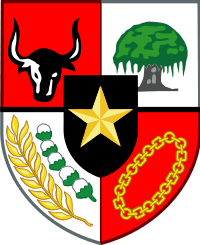 Pancasila Pancasila |
| Form of government | multiparty republic with two legislative councils – The House of Representatives (DPR) and the Regional Representative Council (DPRD) |
| Constitution | 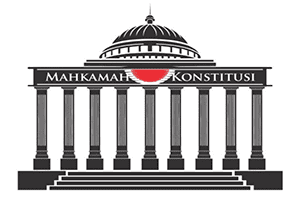 Constitution of the Republic of Indonesia of 1945 Constitution of the Republic of Indonesia of 1945 |
| Head of State and Government | President |
| Capital | Jakarta |
| Official language | 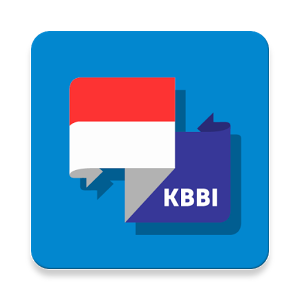 Indonesian Indonesian |
| Coat of Arms | 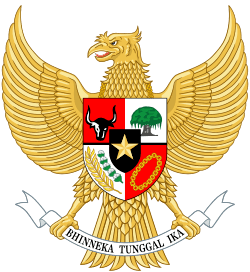 Garuda Pancasila Garuda Pancasila |
| Flag of the Country | 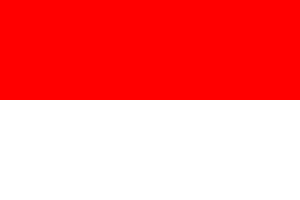 Red and White Red and White |
| National Songs | Greater Indonesia |
| Official Religion | Islam, Protestant, Catholic, Hindu, Buddhist, Khonghucu |
| Currency | rupiah (Rp) |
Geographical Location of Indonesia
The first thing you need to know is the geographical location of Indonesia. Geographical location is the location of a country that can be seen from the real position on earth.
Indonesia is a country located off the mainland coast of Southeast Asia in the Indian and Pacific Oceans. The geographical location of Indonesia is between two continents and two oceans. It is Asia and Australia, while the ocean is the Indian and Pacific Oceans.
Indonesia’s geographical location certainly has a great influence on the development of Indonesia, both in the economic, cultural, social, and knowledge fields. This condition also causes the Indonesian state to have a diversity of tribes, languages, religions, and cultural arts.
Geological location of Indonesia
Next, you need to know the geological location of Indonesia. Geological location is the position of a country as seen from its geological conditions. Geological conditions refer to conditions of volcanism, tectonic conditions, rock conditions, and morphology.
Geologically, Indonesia has the uniqueness of two large mountain trails, namely the Mediterranean Circumspect and the Pacific Circumspect. In addition, Indonesia is also located between the confluence of four large tectonic plates that are still active. The four plates are the Eurasian plate, the Pacific plate, the Philippine Sea plate and the Indo-Australian plate.
Map of Indonesia
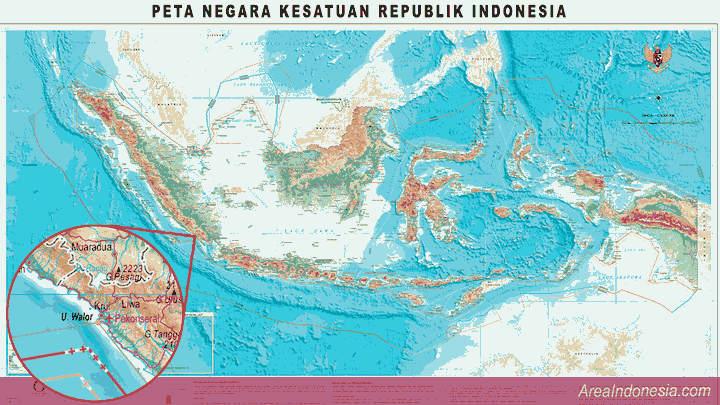
This map of Indonesia depicts the sovereign territory of the Unitary State of the Republic of Indonesia on land and sea. Both in the form of territorial sea (sea area), island waters and inland waters.
You can view and download a large Map of Indonesia (14,761 x 10,158 pixels) with a scale of 1:3,100,000 via the link above or with the button below:
Livelihoods of Indonesian People
Indonesia is known as a maritime country because indonesia has more waters. So, this can affect the livelihoods of people who work more as fishermen. In fact, many Indonesian marine products are sent abroad.
In addition, Indonesia is also known as an Agrarian country so many people work as farmers. Indonesia is also known as a producer of spices sent abroad. In fact, it has been known since past civilizations.
Not only as farmers and fishermen, many people also work as entrepreneurs and traders. Considering that Indonesia is becoming a world trade route. Thus, the opportunity in trading activities is very large. So, indonesian people have diverse livelihoods.
Cultural Diversity of Indonesian Society
The uniqueness of the Indonesian state is cultural diversity. The diversity of Indonesian culture is evident from the traditional clothing, traditional houses,traditional ceremonies, special foods, and languages owned from various regions in Indonesia.
Every region in Indonesia from Sabang to Merauke has different characteristics from each other. The culture continues to grow for generations so it is not easy to be forgotten by the supporting community.
Indonesia’s diversity is reflected in the spirit of Bhineka Tunggal Ika which is different but still one. In a sense, put forward the spirit of togetherness even though there are many differences. If you travel around Indonesia, you will definitely get the opportunity to learn various local cultures from each region.
This cultural diversity is one of the important keys in developing the value of tolerance and mutual respect for differences. Of course, this can be a pride in itself, but on the other hand this diversity can be a challenge to maintain tolerance.
Social Life of Indonesian People
The social life of Indonesian people promotes togetherness and mutual respect. This is influenced by various aspects of the social life of various Indonesian people. So, people should put forward an attitude of mutual respect.
Indonesia’s social and cultural systems complement each other to create peaceful and peaceful conditions. Although, it is undeniable that this value of tolerance needs to be learned in order to be applied properly. Thus, the creation of harmony in the social life of Indonesian society.
Indonesia: Facts & Statistics
| Also Known as | Republic of Indonesia • Unitary State of the Republic of Indonesia (NKRI) |
| Head of State and Government | President: Joko Widodo |
| Flag | Red and White |
| Capital | Jakarta |
| Population | (2021 est.) 269.804.000 |
| Currency exchange rate | 1 USD equals 14,251,923 Indonesian rupiah |
| Form of government | multiparty republic with two legislative councils (Regional Representative Council 1; [132] House of [560] Representatives) |
| Official language | Indonesian |
| Official religion | Islam, Protestant, Catholic, Hindu, Buddhist, Khonghucu |
| Official Name | Republic of Indonesia (Republic of Indonesia) |
| Total Area (Square km) | 1.916.907 |
| Total Area (Sq Mi) | 740.122 |
| Currency | rupiah (Rp) |
| Population Rating | (2021) 4 |
| Population Projections 2030 | 298.806.000 |
| Density: People Per Sq Mi | (2021) 364.5 |
| Density: People Per Km | (2021) 140,7 |
| Urban-Rural Population | Urban: (2018) 55.3% • Rural: (2018) 44.7% |
| Literacy: Percentage of Population Aged 15 Years and Above Literacy | Men: (2016) 97.2% • Women: (2016) 93.6% |
| GDP (US$ ‘000,000) | (2020) 1.059.511 |
| GDP per Capita (US$) | (2019) 3.870 |
That’s the question about the country of Indonesia that you need to know. May this knowledge be useful for you, especially for Indonesian citizens to create love for the homeland. You can also read more on the official page of the Indonesian Information Portal. In addition, we need to be grateful for being given the opportunity to live in Indonesia, a beautiful country and full of diversity.
Berikan komentar bro/sist